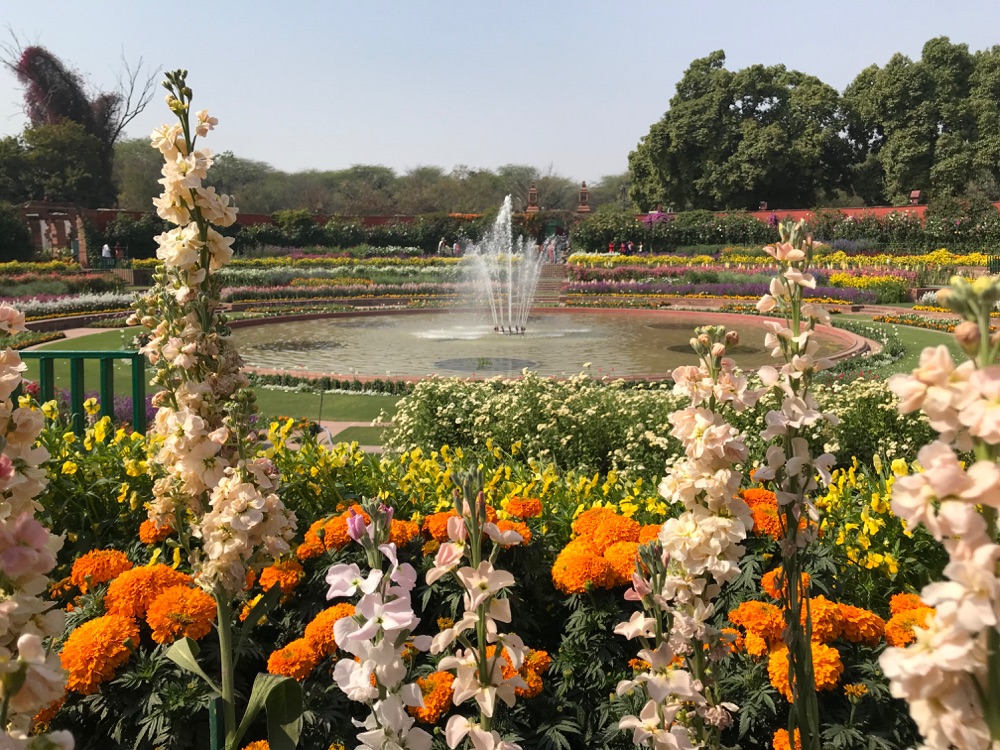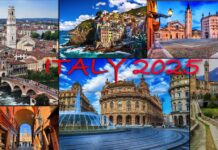
We came to India for many reasons. Most of us wanted to get a more intimate, personal, first-hand experience of the country rather than relying on what we had read or been told by others.
However, many of us came with some negative expectations. We had accepted that we were likely to find streets crowded, after all we were well aware that India’s population is now well over a billion and that within a few years is expected to surpass that of China.

We also expected to see poverty and some of us anticipated having to deal with a multitude of unpleasant smells as well as probably seeing public areas and landscapes littered with garbage.
These were some of the prejudices we came with. Pretty much all of them were very quickly blown away.

Arriving in New Delhi, we were immediately surprised to find streets clean and neatly landscaped with attractive traffic islands filled with clipped, sometimes sculptural evergreens.
And, contrary to what we had been told, we did not experience any foul or unpleasant smells. We’ve been here four days now and that is still the case.
Some things people warned us about were true.

The day we arrived, the city was submerged in a fairly dense cloud of smog with the light scent of burnt wood.
Local TV weather reports called this heavy haze “fog”, but it was not fog and was most definitely smoke-filled polluted air that was blocking the sun and causing a dramatic deduction in visibility.

Newspapers here have since carried stories calling this problem “catastrophic” and saying the city would be unliveable if things did not change soon.
Nevertheless, by the next day, things had changed and we were treated to cloudless blue skies and glorious sunshine and comfortable temperatures in the mid-20s.

It was perfect weather for visiting key monuments and historic sites and gardens.

Moving around New Delhi, we quickly noticed that drivers continually honk their horns.

We were told the reason is that no one uses their rear view mirror – no one cares what is happening behind them – but they need to alert the person ahead of them if they intend to pass or push through: hence the horn.
Technically, we are here to see great gardens, mogul gardens, gardens with character and a history.

Beautiful gardens is the connecting theme for all of my tours. It is the underpinning link that brings together all the people who come on these tours.
While it is certainly true that we all also want to experience other aspects of India’s fine culture – food, architecture, art, historical sites, and so on – it is the joy of visiting and enjoying beautiful gardens that connects us and is at the heart of our shared enthusiasm.

For our second touring day in New Delhi, we went to see a few gardens, starting with the famous Lodhi Gardens, next to the India International Centre.
This 90-acre park-garden complex contains the crumbling domed tombs of Sayid and Lodhi, rulers from the 15th century.

Although in neglected condition, these ruins are still a delight to walk around and offer wonderful elevated views and focused vistas of the surrounding gardens.
Highlights included a tunnel of orange honeysuckle and a colourful meadow of mixed dahlias next to a serpentine lake filled with the crinkly leaves of water hyacinth.

From the Lodhi Gardens, we went to see the Palace Gardens, which are only open for a month every year.
Here we found dazzling displays of summer flowers of every kind as well as large rose garden.

The main attraction was a circular garden with a fountain at the centre and four circles of terraces, each one immaculately and lavishly planted with summer flowers. Paths around this circle garden were lined by towering stands of dahlias, heightening the impact of the overall display.

We all agreed that we had never seen anything quite like it before. The density of planting and exuberance of floral colour resulted in a spectacular show.

Since the garden is located right next to India’s presidential palace, security is intense. Men and women are separated and searched before being allowed in. I was forced to give up my lip balm. A friend had to surrender her tissues.

Cameras are not allowed but, for some strange reason, cell phones are. Therefore, everyone was able to take as many photos as they liked. Apparently, the rule was made when cell phones were not able to take photographs. It still didn’t explain why I had to give up my lip balm.

From the Palace Garden, we stopped to get a closer look at the India Gate, Delhi’s Arc de Triomphe, erected to honour the 90,000 Indians who died fighting in the First World War.

After lunch, we decided to pop out to see the Lotus Temple and garden, developed by the Baha’i community.
The white nine-petalled building in the shape of an opening lotus flower is considered one of the city’s new architectural wonders.

Here we also saw, for the first time, people carrying a covered dead body on a stretcher through the streets on the way to a funeral. It was a sobering sight but mixed in with all the noise and bustle of everyday time, it was an event that also seemed natural and no one seemed particularly shocked or alarmed.

The next morning, we took an early train to Chandigarh. Delhi station is already a riot of activity at 7 in the morning and fighting our way through lines of tuk tuks and food truck vendors and on to the platform for our express train ride was quite a challenge, but we made it without incident and many enjoyed the challenge of it.

Fortunately, we were able to leave our main bags at Claridges and take only a smaller, travelling suitcase for our days in the Punjab.

After lunch, we visited the Capital Complex to view some of the historic buildings created by Le Corbusier in the 1950s, including his artwork, the Open Hand monument, and his imaginative painted enamel door at the entrance to the Palace of Assembly building, parliament building for Punjab. We also viewed the High Court/ Secretariat building. These works are designated as a UNESCO World Heritage Site.

Inside the Assembly, we found the stylish cloud windows had been covered over out of fear of terrorism.
This affectively blocked all natural light entering the main assembly. It struck me as a mistake since, if anything, modern day legislators need to have more light shed on their decision making, not less.

Le Corbusier’s architecture here is said to represent “one of the most monumental architectural compositions of Modern Urbanism” and “an important part of the global legacy arising out of a unique geo-political and cultural setting.” Good to know.
Tomorrow we visit a rock and a rose garden.



















